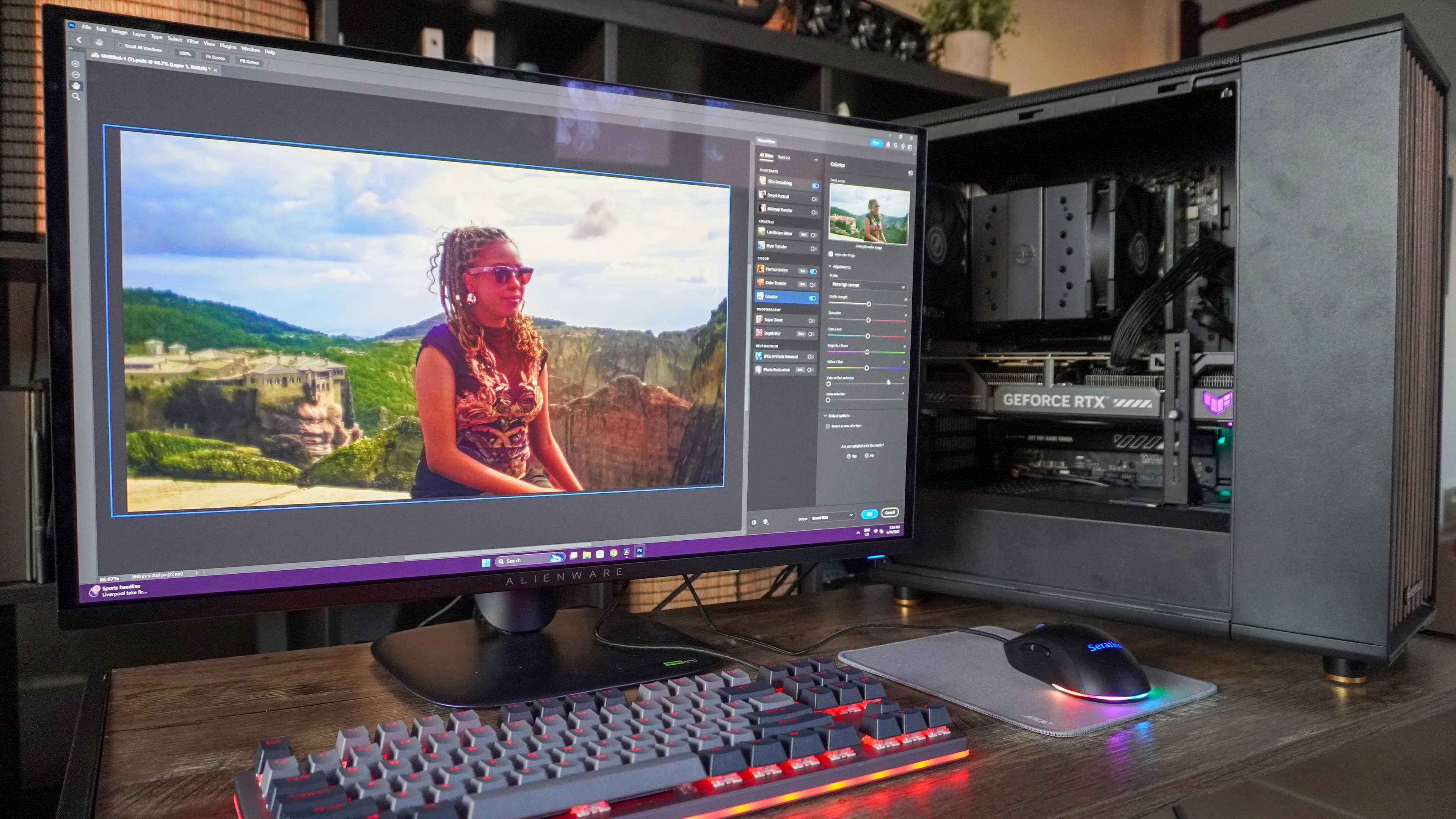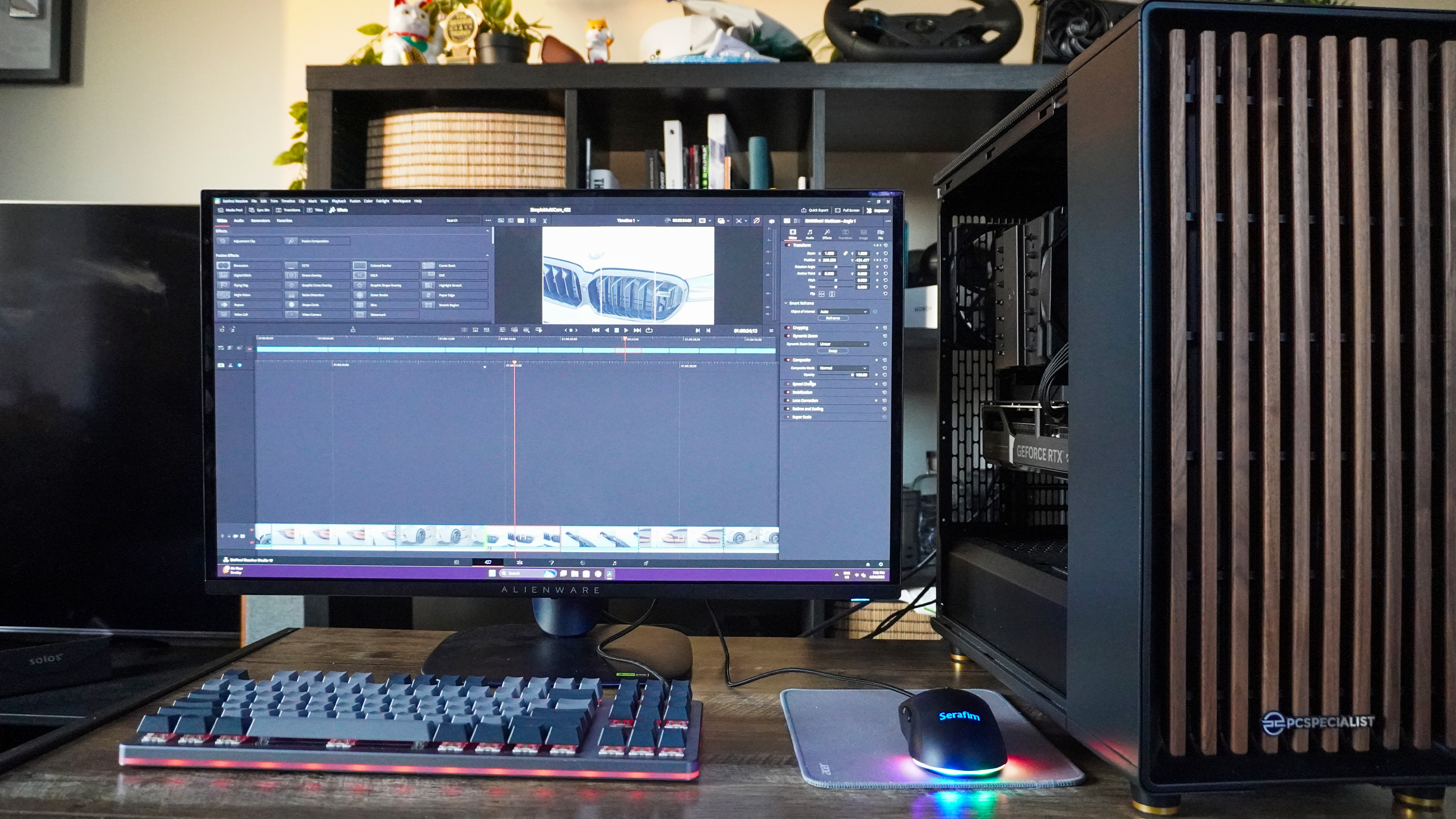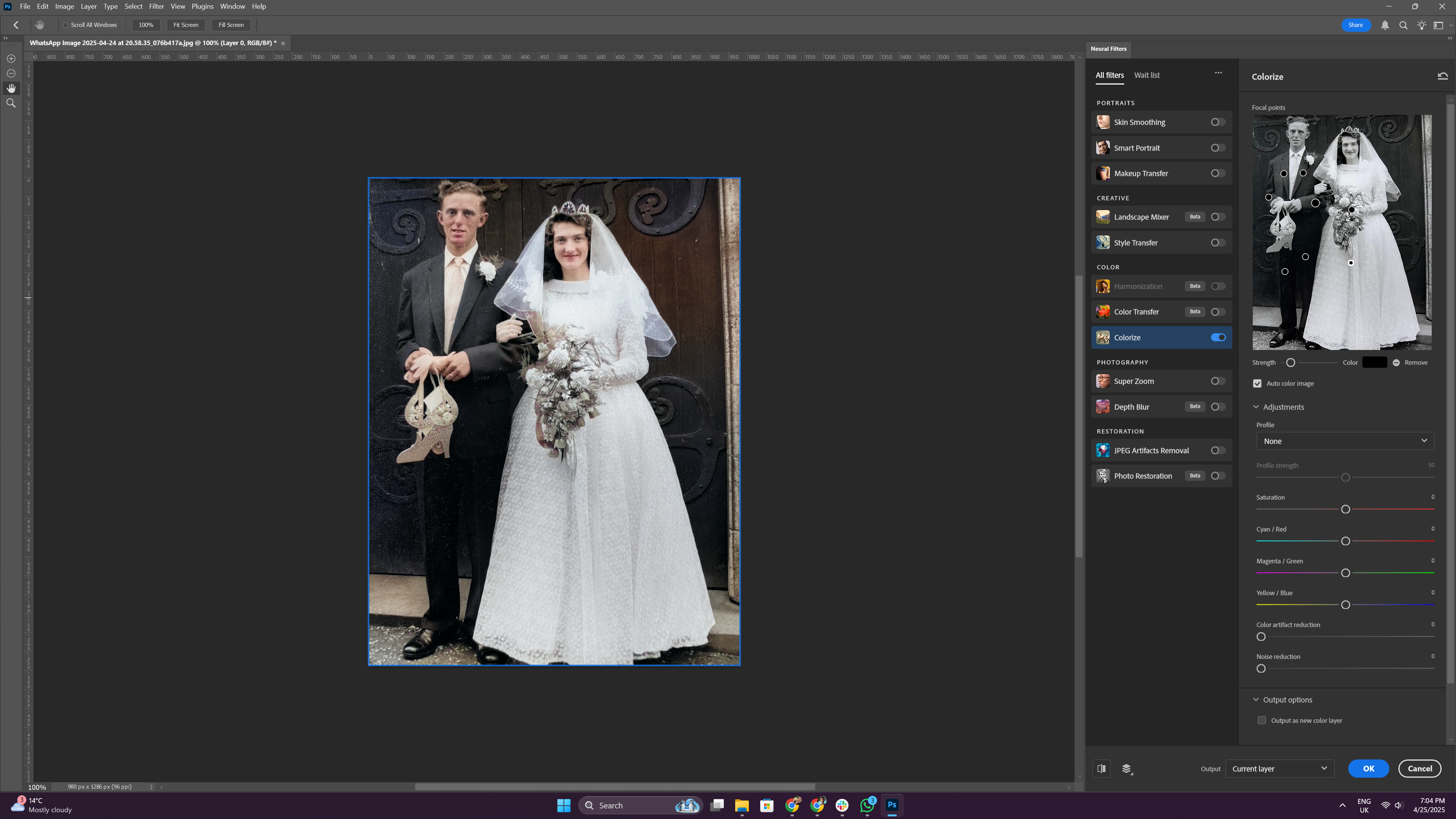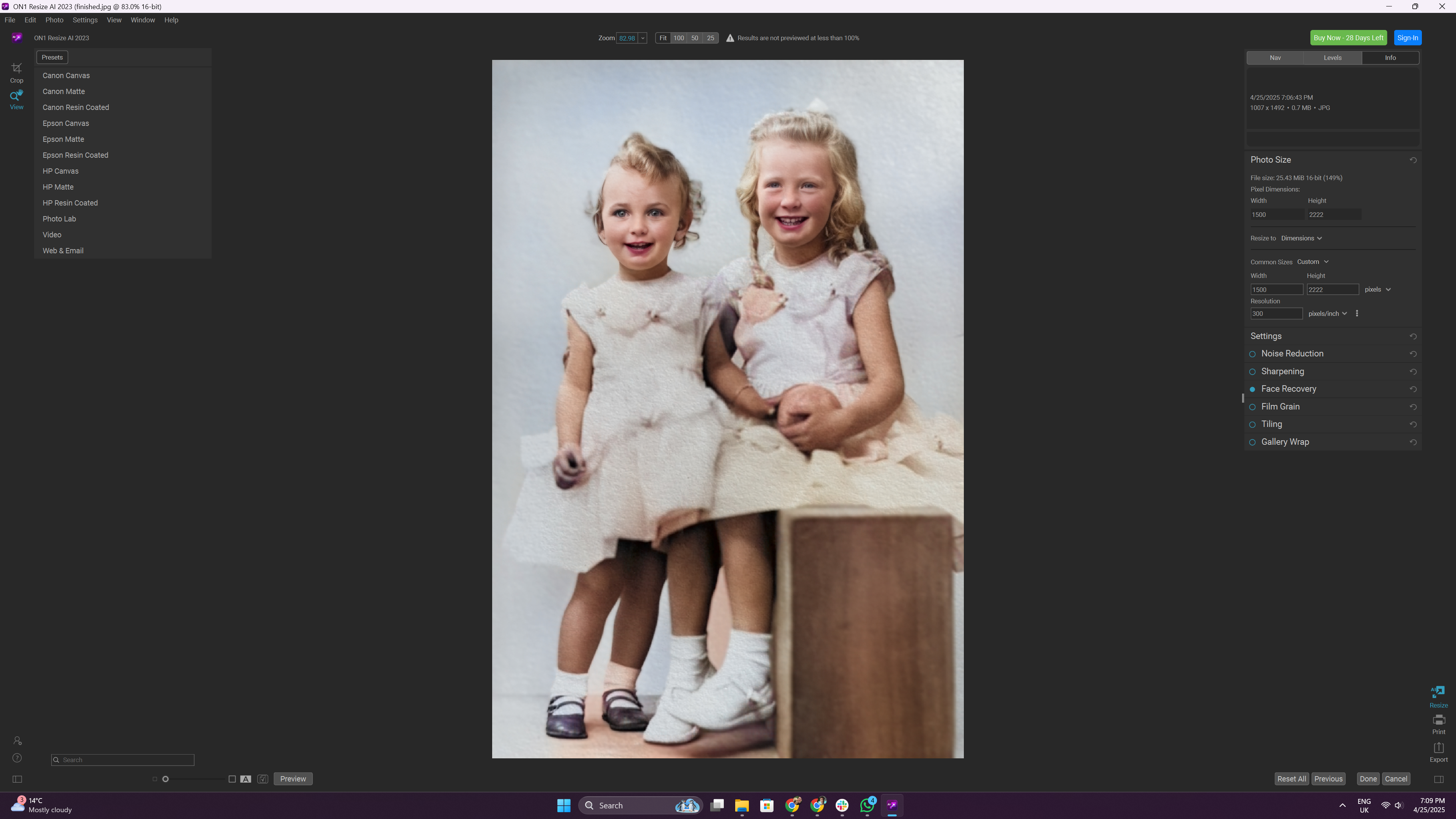I tested an RTX 50 series gaming PC for everything but gaming — for content creation, it blew me away
Work by day, play by night

Whenever you hear the words “Nvidia GeForce RTX 50 series,” your mind immediately goes to gaming. And that’s OK, but it’s really only half the story.
To me, the superpower benefit that has driven me from being a console gamer to a card-carrying member of the PC master race is clear — being able to use the same machine to both play and get stuff done.
And oh boy has this transformed the way I edit video and photos. From vastly quicker AI-driven tasks in DaVinci Resolve Studio 20 to breathing new life into my older relatives’ black and white photos with Photoshop neural filters and ON1 Resize AI, it’s frankly a creative dream.
Let’s break it down.
What PC did I use?

For this testing, I used the Cortex Supreme prebuild from PC Specialist. Housed inside the gorgeous Fractal North gaming case, you’ll find the AMD Ryzen 7 9800X3D CPU, Asus TUF GeForce RTX 5070 Ti OC GPU, 32GB of Corsair DDR5 RAM and a 2TB PCie Gen 4 SSD – powered by a Corsair 850W power supply.
This is all stuck onto the Asus TUF Gaming B850-Plus Wi-Fi 7 motherboard, with a FrostFlow 200 Series CPU cooler for company. It’s a mighty setup that can take pride of place on any desk.
As for the monitor, I'm using the Alienware AW2725Q 4K OLED gaming monitor. Seriously, it's gaming greatness, but that color accuracy really gave me confidence in my edits.
Sign up to get the BEST of Tom's Guide direct to your inbox.
Get instant access to breaking news, the hottest reviews, great deals and helpful tips.
By the numbers
Since I know the main thing some people will want to see are the numbers, let’s start there. And for me, they were a very humbling experience to my preconceived notions that Apple was the way to go for creative work.
I get that a dedicated GPU will always deliver faster speeds, but I didn’t quite expect them to be this much faster.
Benchmark | PC Specialist Cortex Supreme | M4 Pro Mac mini |
|---|---|---|
Pugetbench Premiere Pro | 10672 | 8729 |
Pugetbench Photoshop | 14283 | 11967 |
Blender 4 Classroom | 1932 | 418 |
Now bear in mind that this isn’t just the base M4 Pro Mac mini – this is a more loaded model with the supercharged Pro running in high power mode with 48GB of unified memory. This is £150 ($200) more than the PC I’m running.
I understand there are other things to consider here, such as the size of the Mac mini vs this large tower and the fact these speeds are roughly 10-20% faster than the RTX 40-series GPUs – meaning you could consider a cheaper buy if you can compromise that overhead.
But these numbers are seriously impressive. So let’s put this gaming PC into my day-to-day.
Making my next cinematic masterpiece

Of course I’m being sarcastic – my history is more in creating social video and YouTube longform content, as I explain in my best laptops for video editing guide.
But I digress. If you are to use Premiere Pro, you’ll only spot those minor 10% bumps in performance over older GPUs. But the real magic here came when I used a prerelease version of DaVinci Resolve Studio 20, which takes advantage of the faster and higher amount of Tensor cores for AI acceleration.
Not only that, but there is now support for two key standards that can be complicated for a computer to handle:
- 4:2:2 color formats: it’s a space-saving measure of a new video coloring format that doesn’t bake all of the color information directly into the video. This can cause some weirdness if your PC isn’t tuned to it, but support is now here.
- AV1 encoding: While everyone is on the H.265 train, here comes the Alliance for Open Media with a new high quality video encoding format. This is still relatively new, for example the first smartphone to use it is Google Pixel 8 with iPhone 16 following last year. But it's nice to know this is here and being adopted widely.
Expanded support aside, though, I was especially impressed tucking into my project and being able to play in real-time without needing to wait for render times like I did on other systems in my arsenal.
On top of that, the AI driven tasks like masking a moving person to have them walk in front of a video title, or creating slow-motion videos with speed warp are handled oh-so quickly.
This is great news for the creative pros, and the hits keep coming when you apply the 5070 Ti to CapCut. For the TikToks you create, this app has been legendarily AI-reliant for stitching clips together, applying color edits and effects for you. With GPU acceleration, this goes by so much faster than I’ve ever experienced on my other systems.
Bringing pictures back to life

Now for the shutter bugs out there. I’m a Photoshopaholic, and the 5070 Ti really comes into its own with the Neural Filters (not the ones that are done entirely on the cloud, of course).
To put this to the test, I wanted to give myself a unique challenge. My mum (not mom) sent me some old black and white photos from her parents’ earlier years, and I decided to try and colorize them while boosting the resolution using ON1 Resize AI.
This is relying a lot on the GPU (using roughly 12GB of the 16GB of that onboard video memory) and some interpretive guess work – analyzing the grayscale shades of these pics and figuring out what the colors are. And the results? Well, I’ll let them speak for themselves.


As you can see (and as my mum said), they’re really close to what they looked like being taken in the moment! Not only that, while my M3 Pro MacBook Pro implemented these filters in around a minute, the PC took literal seconds.

Finishing them off with a little resizing action has given me a nice little present to give my family soon!
Outlook
Like I said, the real superpower of a gaming PC is not just the gaming – it’s everything it can do as well as gaming. Ignoring the urge to play Cyberpunk all day and use this as my primary machine for work too has been eye-opening to say the least.
It really demonstrates the value you’re getting from snagging something like this over the creator standard picks like the Mac Studio. Plus it can become a work by day/play by night kind of thing.
More from Tom's Guide

Jason brings a decade of tech and gaming journalism experience to his role as a Managing Editor of Computing at Tom's Guide. He has previously written for Laptop Mag, Tom's Hardware, Kotaku, Stuff and BBC Science Focus. In his spare time, you'll find Jason looking for good dogs to pet or thinking about eating pizza if he isn't already.
You must confirm your public display name before commenting
Please logout and then login again, you will then be prompted to enter your display name.
